Table of Contents
Agricultural sprayers are revolutionalizing the farming industry
The most common types of agricultural sprayers
Factors to consider when purchasing an agricultural sprayer
Finding the right agricultural sprayer for your business
Agricultural sprayers are revolutionizing the farming industry
Agricultural sprayers are farming machines used to apply liquid or granular material over the crops to protect them from insects, weeds, and various diseases. These sprayers can be mounted on wheels or towed by a tractor or vehicle. Farmers use these machines during the seeding, spraying, and harvesting periods.
The development of agrochemicals and advancements in farming techniques have fueled the rise of agricultural sprayers. One of the primary benefits of these sprayers is that they enable farmers to cover large areas quickly, thereby acting as a cost-effective option.
The agricultural sprayers’ market size was valued at USD 2.30 billion in 2020 and is projected to reach USD 4.02 billion by 2028, growing at a CAGR of 7.2% from 2021 to 2028. The market for these farming tools can be expanding significantly in the Asia Pacific due to the subsidies allotted by the governing bodies of developing economies in the region. As these sprayers play an important role in enhancing crop yield, they have become an integral part of farming practices across the globe.
The most common types of agricultural sprayers
Due to advancements in technology, various types of agricultural sprayers have evolved, each possessing unique features and applications. Agricultural sprayers can be categorized into five types based on their capacity and mounting configuration.
Hand-operated sprayers
Man-portable sprayers, also known as hand-operated sprayers, are one of the most affordable options on the market, making them an excellent choice for small-scale agricultural operations. They do not hold a lot of liquid and are a good choice for tending to small gardens or plots of land.
Handheld sprayers allow for more control over the application of the liquid substance. The fluid is sprayed from an adjustable nozzle, allowing the user to adjust the distance and direction of the spray.
These inexpensive sprayers are not suitable for large-scale farming activities because of their small size and limited capacity. On top of that, large quantities of chemicals may cause damage to the operator’s skin if not handled carefully.
Knapsack hand-operated sprayer
The knapsack hand-operated sprayer is a lightweight, portable, and low-maintenance option for growers. With a spacious polypropylene tank, it can hold up to 20L of liquid. The large flow piston pump can be used to spray pesticides or other liquids in a light mist or be connected with any four-hole nozzle to create huge sprays.
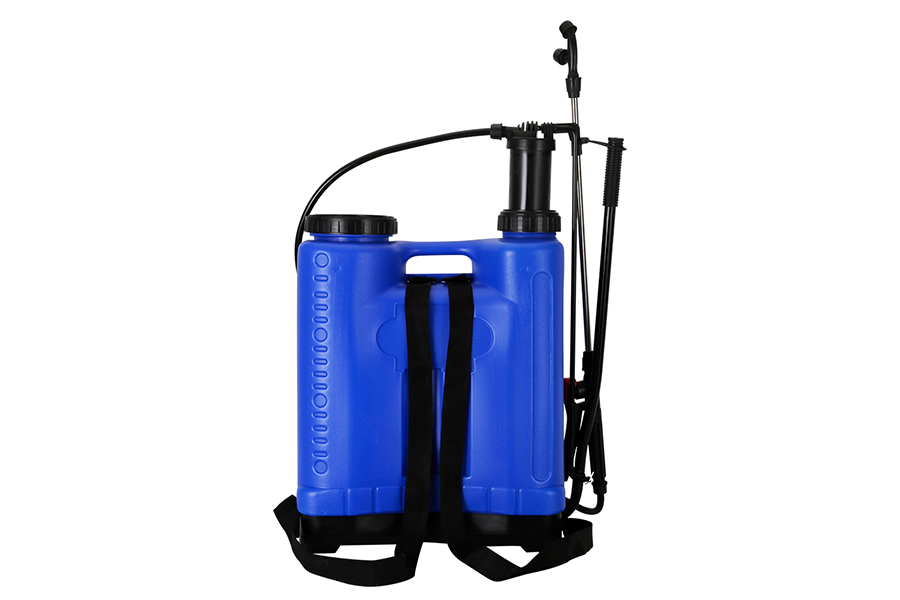
Electric hand-held sprayer
The electric hand-held sprayer is excellent close spraying equipment designed for the spraying of agrochemicals, water, and other non-corrosive liquids. It uses an electrical pump to deliver the chemicals to the nozzle at a high level of pressure, enabling it to satisfactorily solve the disadvantage of manual spraying equipment. The thickened barrel ensures no splitting or cracking after repeated use.
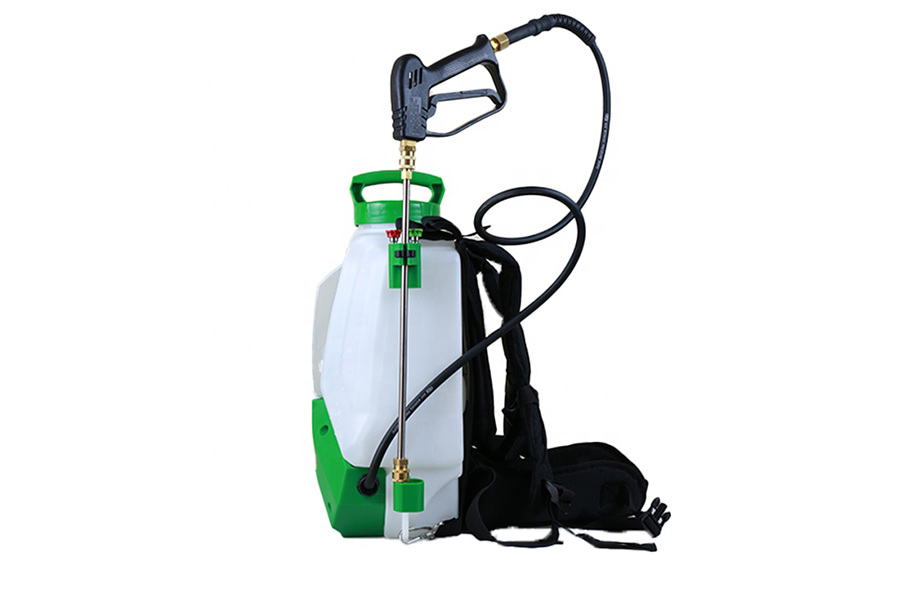
Mounted booms
A mounted boom sprayer is a tractor-drawn sprayer with a boom that sprays crop treatments over the plants. The boom can either be rear- or front-mounted and is available in different widths depending on the size of the field.
Agricultural mounted booms have a much greater capacity than handheld sprayers, which means they can cover a lot more area in one go and at high-speed, thanks to the power provided by the tractor. This makes them ideal for large-scale farming operations where efficiency is paramount.
Mounted booms are not suited to confined spaces, as the sprayer is affixed to the tractor and has a limited turning ability. In addition, mounted booms may be cumbersome on hillsides and uneven terrain.
Tractor-mounted rod sprayer
Flexible and powerful, the tractor-mounted rod sprayer provides highly efficient coverage for both foliar and soil applications. It is equipped with a double-cylinder pump for stable working pressures and even spraying, and a tank carrying up to 1000 liters. With its 12 meters working width and adjustable height, this tractor-mounted sprayer can finish 3 to 5 hectares per hour, allowing farmers to spread fertilizers evenly over their fields.
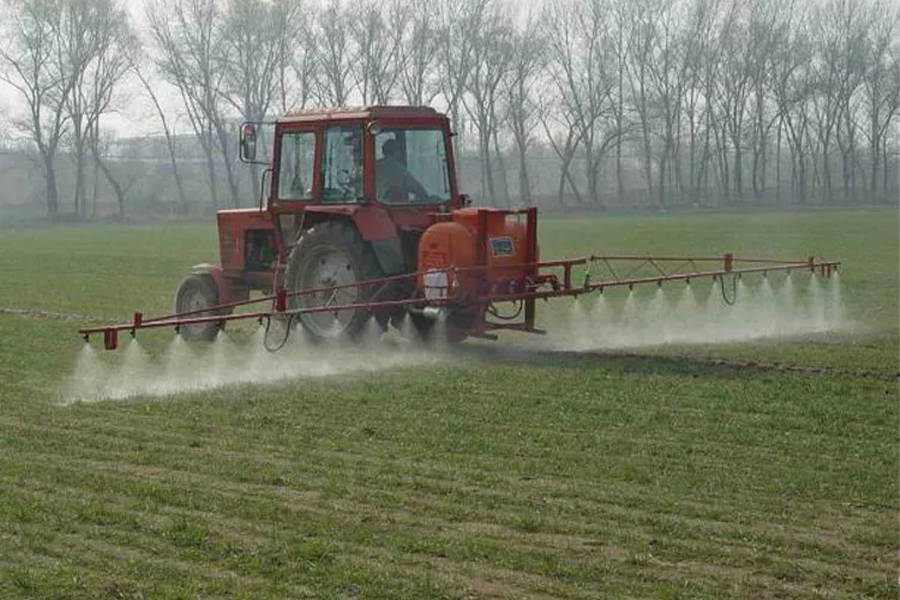
3 point-mounted boom sprayer
The 3 point-mounted boom sprayer is suited to large agricultural operations that require spraying large areas. This sprayer can accommodate up to 1200L of liquid and comes with an adjustable width spray ranging between 6m and 12m. The working angle can also be adjusted to ensure total precision even when dealing with delicate plants, reducing loss and maximizing efficiency for every harvest.
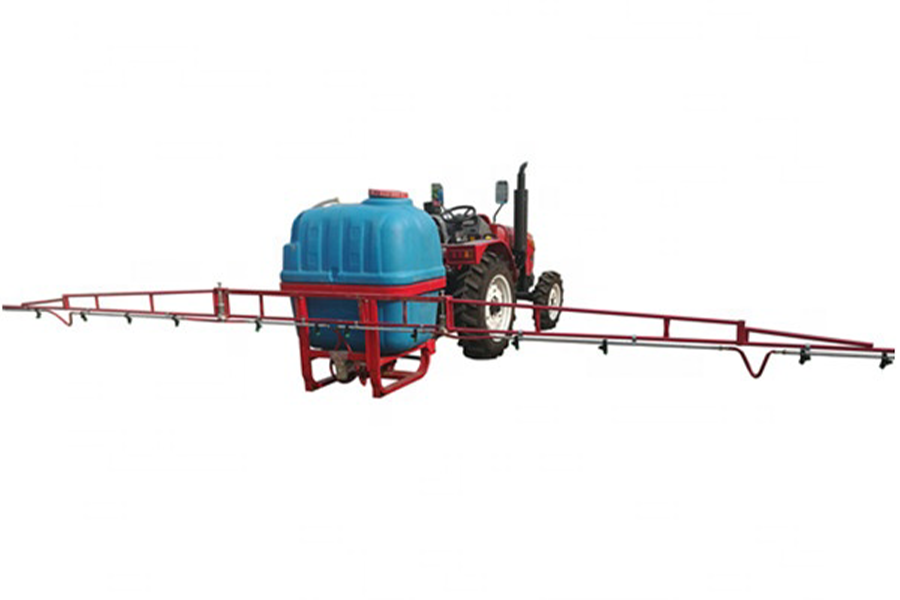
ATV/UTV sprayers
ATV/UTV sprayers are a medium-capacity alternative to backpack sprayers. These types of sprayers are easy to maneuver and can be used in a variety of terrains. The farmer can easily tow them around the field or ranch to spray those hard-to-reach places that would be difficult with a tractor.
Like hand-operated sprayers, ATV/UTV sprayers cannot deliver sufficient amounts of chemicals over a large area. This makes them best suited for small farms where only a few acres need to be sprayed.
ATV electric sprayer
The ATV electric sprayer is an innovative, electrically powered machine engineered for ease of operation and extended spraying time. It features a 100L tank with UV-stabilized polyethylene, a power/chemical-grade hose, and a self-priming pump. With an adjustable brass nozzle and three spraying modes, this electric sprayer allows the users to adjust the pressure to fit various spraying needs.
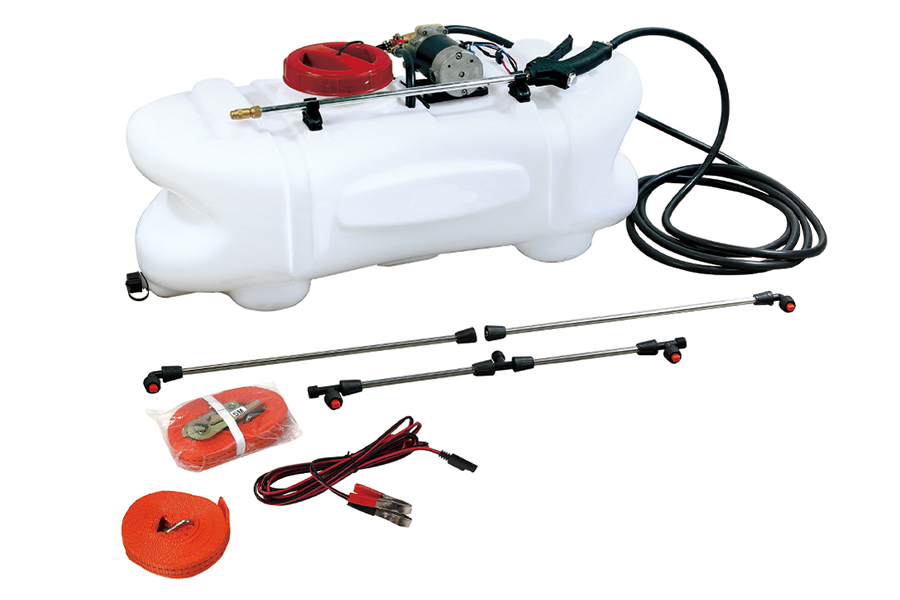
UTV trailer sprayer
The UTV trailer sprayer is designed to perform spraying in areas with soft ground and steep terrain. Moreover, the adjustable axle and tandem wheels offer a smooth ride over rough terrain. Capable of spraying trees up to 80 feet in the air, this high-pressure sprayer features an internal pump belt drive that transfers liquids quickly and efficiently.
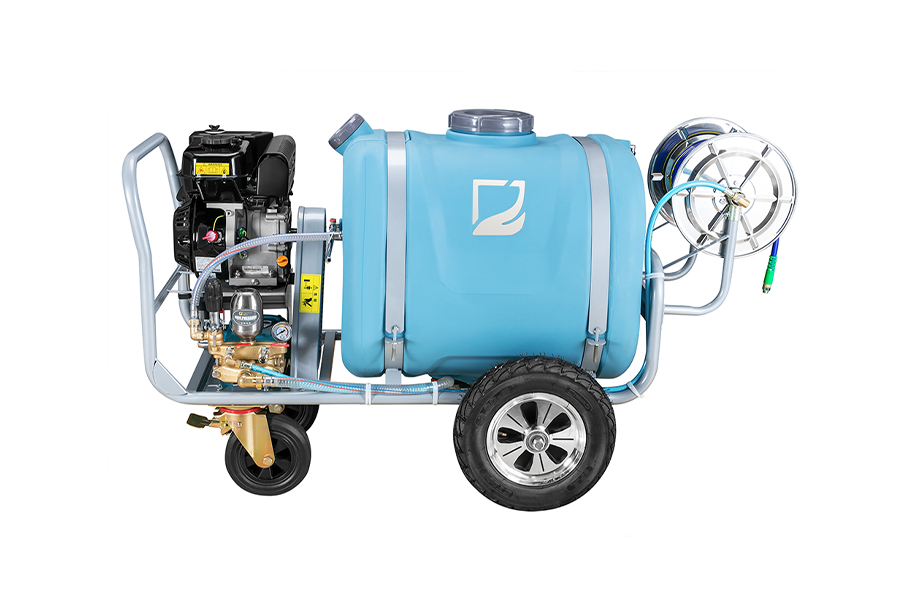
Mist blowers
Mist sprayers, also called foggers, release the liquid they carry in a fine cloud of mist rather than spraying it in streams or drops. Mist blowers are the preferred equipment for delicate plants. Droplets can bruise and damage the leaves of some plants, but the fine sprays produced by mist blowers are gentler.
With their high spraying capacities, mister nozzles are ideal for applying insecticides, herbicides, and fungicides over large fields. That said, not all liquids are appropriate for a mist sprayer. Certain chemicals and fertilizers are more effective when used in higher doses, while others are too viscous to disperse properly.
Self-propelled engine mist blower
With the self-propelled engine mist blower, there is no need anymore to carry heavy cans of chemicals. Designed for larger orchards, this mist sprayer uses an efficient engine cooling system, which is much more convenient to maintain when compared to traditional water pumps. The nozzles can be adjusted to get just the right amount of spray, and it is even electric-powered, so no pumping is involved at all.
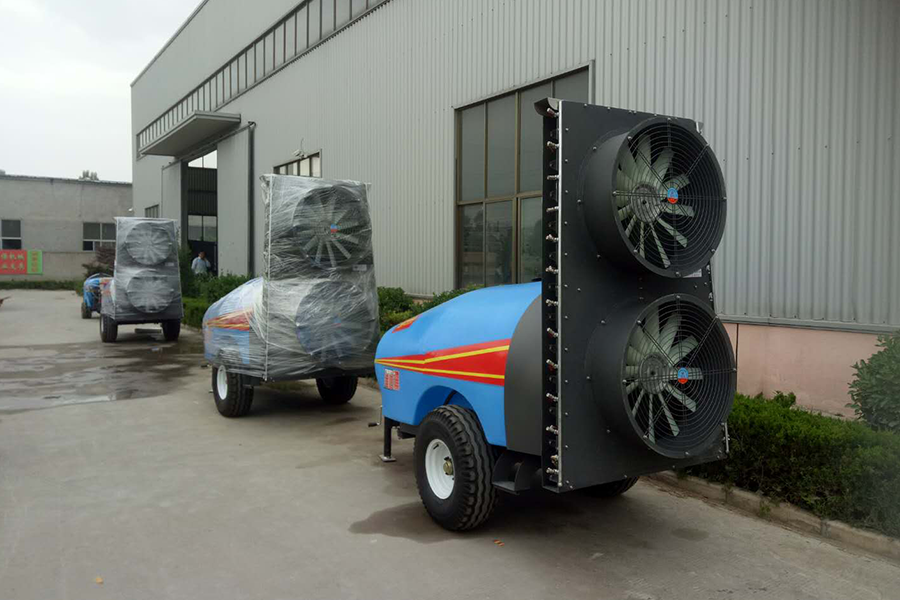
Airblast sprayer
The airblast sprayer, equipped with a powerful motor and speed control, can achieve 360-degree spraying. The speed control enables the operator to adjust the intensity of the spray depending on plant type, height, and density. This agricultural sprayer comes with an adjustable height fitting, which means it can be used on all terrains in various conditions and can reach tight areas around plants and trees.
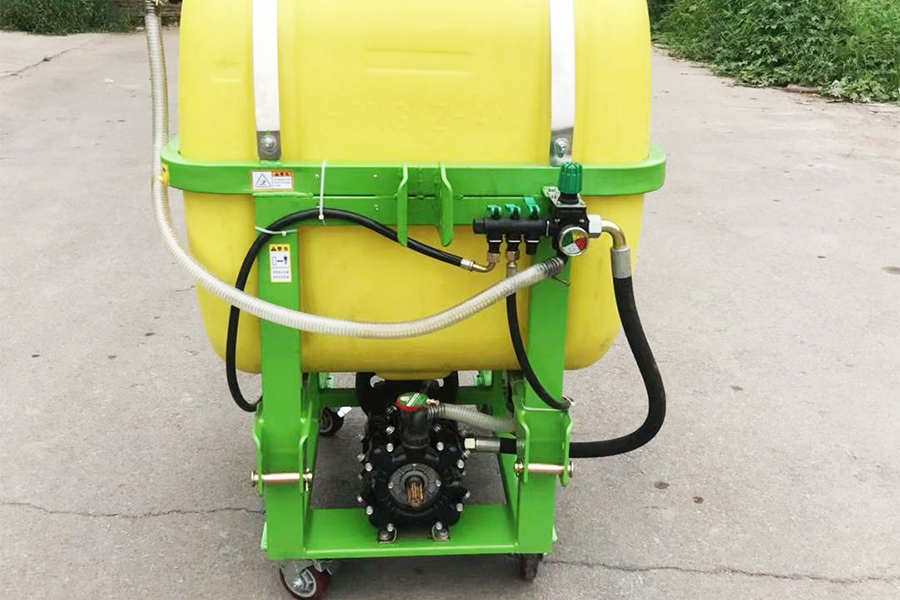
Aerial sprayers
Aerial sprayers, or UAVs, are revolutionizing the agricultural realm and have been rapidly adopted by farmers worldwide. They can be used in most terrain types, including mountainous, hilly, or wetland environments.
Aerial spraying allows farmers to apply fertilizers, pesticides, and other chemicals with high precision. This is particularly helpful for large swaths of land where inefficiencies in coverage can lead to major extra costs.
Unlike ground-based sprayers, aerial sprayers can reach distant, otherwise inaccessible locations. Nevertheless, aerial spraying has some limitations. Wind can make it strenuous to distribute chemicals evenly over a target area.
20-liter spraying drone
Offering incredible performance and unique features, the 20-liter spraying drone is the optimal tool for applying pesticides to crops with higher accuracy. This spraying drone features a low volume system with a diameter of 50-200 micrometers that allows for more consistent, precise application. It also features four front-facing nozzles that create a wider spray pattern, allowing for deeper penetration into the crop canopy.
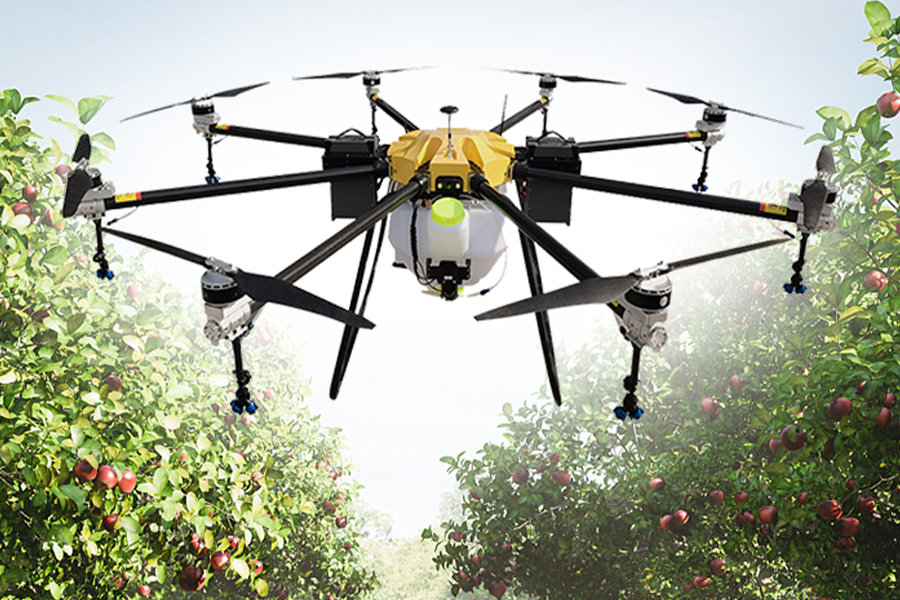
6-axis agricultural drone
Incorporating innovative engineering to create a completely autonomous agricultural aerial sprayer, the 6-axis agricultural drone is capable of remote and automatic pesticide dusting. Its special cyclonic dusting technology helps to keep the operator at a safe distance while performing pesticide spraying, while its automatic flying and positioning capabilities can help farmers save time, money, and manpower.
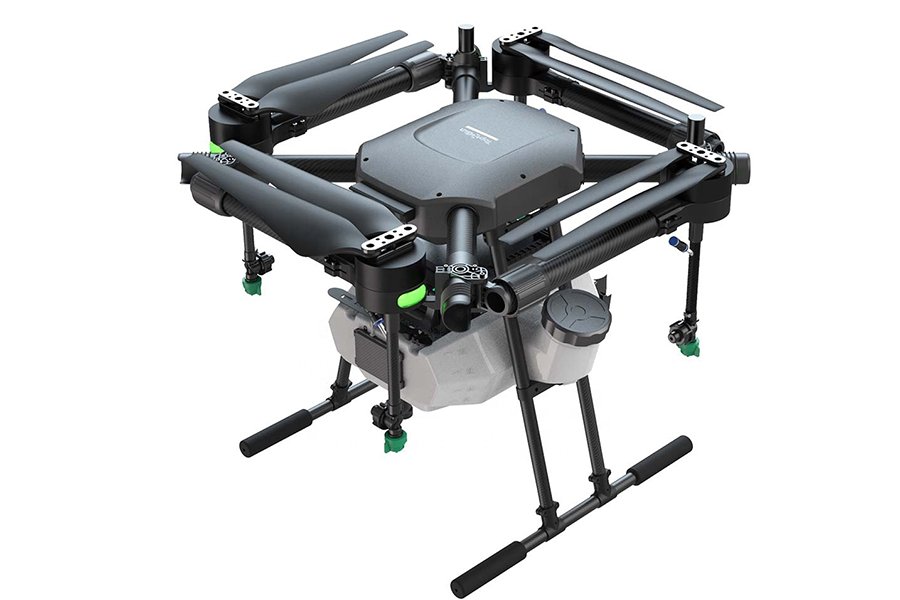
Factors to consider when purchasing an agricultural sprayer
Choosing the proper agricultural sprayer is of paramount importance for a farmer. There are numerous factors that farmers and agribusinesses should consider before purchasing a sprayer.
Compatibility of the sprayer’s materials
When selecting a sprayer pump, business buyers should look for one made with chemically inert materials, ensuring the pump will not interact with the dispensed liquid. For instance, spraying water requires no special material; however, to spray any chemical agent, it is of great consequence to have a pump built from materials such as stainless steel that can resist corrosive chemicals.
Type of crop to be sprayed
The type of crop is one of the foremost things to consider when buying an agricultural sprayer. For example, boom sprayers are quintessential for farmers that need to reach high trees in an orchard. Alternately, a self-propelled mist sprayer would be more suitable for large and flat fields.
Size of the area to be sprayed
When purchasing a sprayer, the size of the area to be covered is a prime factor to consider. It will determine the capacity of the tank, pump flow rate, and pressure. A small hand-operated sprayer would be suitable for small areas, whereas large areas require large-capacity sprayers such as tractor-mounted booms.
Nozzle size
The size of the spray nozzles is another prominent feature to consider when choosing a sprayer. The choice of nozzle affects the size of droplets and how easily they may be deposited onto a surface. For example, a fine mist is ideal for spraying delicate crops such as herbs and flowers, while a wider mist is more suitable for spraying trees and shrubs.
Finding the right agriculture sprayer for your business
This selection guide aims to help wholesalers and agribusinesses improve their business and yield by choosing the right agricultural sprayer. While this article focuses on agricultural sprayers, agribusinesses and wholesalers can find more agricultural equipment like tractors, cultivators, seeders, harvesters, and fertilizers on Chovm.com.





 বাংলা
বাংলা Nederlands
Nederlands English
English Français
Français Deutsch
Deutsch हिन्दी
हिन्दी Bahasa Indonesia
Bahasa Indonesia Italiano
Italiano 日本語
日本語 한국어
한국어 Bahasa Melayu
Bahasa Melayu മലയാളം
മലയാളം پښتو
پښتو فارسی
فارسی Polski
Polski Português
Português Русский
Русский Español
Español Kiswahili
Kiswahili ไทย
ไทย Türkçe
Türkçe اردو
اردو Tiếng Việt
Tiếng Việt isiXhosa
isiXhosa Zulu
Zulu